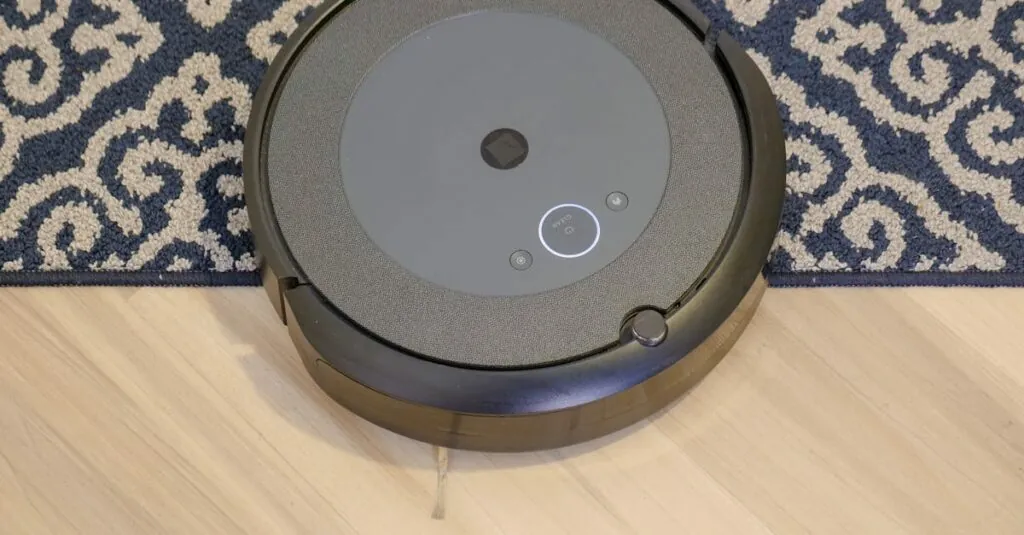Imagine a home that knows you better than your best friend. Smart home technology is here to turn that dream into reality, making life easier and a whole lot cooler. From controlling your lights with a simple voice command to adjusting the thermostat while you’re still in bed, these gadgets are like the personal assistants you never knew you needed.
Table of Contents
ToggleOverview of Smart Homes Technology
Smart homes technology transforms living spaces into interconnected environments. Devices like smart thermostats and lights connect seamlessly, providing users with control and automation. Voice-activated systems, such as Amazon Alexa or Google Assistant, facilitate easy commands, allowing for quick adjustments.
Connectivity relies on wireless protocols, including Wi-Fi, Zigbee, and Z-Wave. These technologies enable communication between devices, enhancing user experiences. Security systems, equipped with smart cameras and doorbells, offer real-time alerts and remote monitoring.
Energy efficiency becomes a priority with smart home devices. Smart thermostats adjust to user habits, optimizing heating and cooling schedules, which results in significant energy savings. Additionally, smart lighting systems can adapt brightness based on occupancy and natural light availability.
Convenience plays a crucial role in smart homes. Remote access through smartphones or tablets makes it simple to manage appliances, check security feeds, or modify environmental settings. Automation allows for preset routines, like adjusting lights and locks at bedtime.
User-customized settings enhance interaction. Each family member can tailor preferences, ensuring ease of use for everyone. Integrations with home health technology also emerge, enabling monitoring and alerts for elderly residents.
Adoption of smart home technology continues to grow. Market research indicates a projected annual growth rate of 26.9% from 2020 to 2027. As consumer interest increases, innovation in smart devices evolves, delivering greater functionality and user-friendly interfaces.
Smart homes embody efficiency, convenience, and security, revolutionizing how individuals interact with their living spaces.
Key Components of Smart Homes Technology
Smart home technology comprises several essential elements that enhance convenience and functionality. These components create a connected living environment that adapts to user needs.
Smart Devices and Appliances
Smart devices and appliances serve as the backbone of a smart home. Products like smart refrigerators, smart ovens, and smart washing machines increase efficiency in daily chores. They often come equipped with sensors for monitoring usage and energy consumption. Many devices allow control via smartphone apps or voice commands. Popular brands, such as Samsung and LG, offer appliances with integrated smart features, enabling users to streamline their routines.
Home Automation Systems
Home automation systems orchestrate the interaction between various devices and appliances. Systems such as Google Home, Amazon Alexa, or Apple HomeKit provide platforms for seamless integration. These systems enable users to create customized routines or scenes that adjust multiple devices simultaneously. For instance, a single command can lower blinds, adjust lighting, and set the thermostat. Automation enhances energy savings and user comfort throughout the day.
Connectivity and Networking
Connectivity and networking are critical for ensuring that smart devices communicate effectively. Wireless protocols like Wi-Fi, Zigbee, and Z-Wave facilitate this communication. Devices connect to a home network, allowing remote access from smartphones or tablets. A reliable network ensures consistent performance and user experience across all devices. Enhanced connectivity fosters a more cohesive smart home ecosystem that intuitively responds to user commands and preferences.
Benefits of Smart Homes Technology
Smart home technology offers numerous advantages that enhance living experiences. Increased security, energy efficiency, and convenience rank among the top benefits.
Enhanced Security Features
Smart home technology significantly improves security through devices like smart cameras and doorbell cameras. Users can monitor their homes in real-time with smartphone notifications when movement is detected. Sensors alert homeowners about unauthorized access, ensuring peace of mind. Smart locks enable remote locking and unlocking, which provides control over entry points. These innovations create a comprehensive security network that protects against potential threats.
Energy Efficiency
Energy efficiency takes center stage with smart home technology. Smart thermostats adjust heating and cooling based on user habits, optimizing energy consumption. Homeowners can track energy usage patterns through connected devices, identifying opportunities for savings. Intelligent lighting systems automatically adjust brightness according to occupancy and natural light levels. These features contribute to lower utility bills while minimizing environmental impact.
Convenience and Comfort
Smart home technology boosts convenience and comfort. Voice-activated assistants enable quick adjustments to lighting and temperature, making daily routines seamless. Remote access via smartphones lets users manage appliances and security whether at home or away. Customized settings allow families to personalize their living environments based on individual preferences. Integration with home health devices supports monitoring for elderly residents, enhancing their comfort and safety.
Challenges and Considerations
Smart home technology presents various challenges that users should consider. Awareness of these issues promotes informed decision-making.
Privacy Concerns
Privacy concerns arise with the increasing integration of smart devices. Many devices collect personal data, such as user habits and preferences, which can pose security risks. Hackers might target vulnerable networks, exposing sensitive information. Consumers face the challenge of ensuring their networks remain secure. Implementing strong passwords and using encryption can mitigate some risks. Users should also review privacy policies of devices to understand data usage practices.
Compatibility Issues
Compatibility issues can complicate the smart home experience. Not all smart devices work seamlessly together, creating frustration for users. Certain ecosystems, such as Google Home or Amazon Alexa, have specific compatibility requirements. Users may find that some devices lack interoperability with others. Choosing devices from the same manufacturer usually enhances compatibility. Researching products before purchase ensures smoother integration into existing systems.
Initial Costs and Maintenance
Initial costs and ongoing maintenance can deter potential adopters. Smart home devices often require significant upfront investment, which can impact budgets. While prices vary widely, essential devices may range from $20 to over $300. Users should factor in the costs of installation and upgrades. Maintenance also requires attention, as software updates and troubleshooting may arise. Investing in user-friendly systems often minimizes complications and enhances long-term satisfaction.
Future Trends in Smart Homes Technology
Emerging trends in smart home technology continue to reshape how residents interact with their living spaces. Integration of artificial intelligence enhances device responsiveness and personalizes user experiences. Increased deployment of machine learning algorithms allows systems to learn user habits over time, improving efficiency in daily tasks.
Expansion of Internet of Things (IoT) devices promotes further connectivity within homes. Greater interoperability among devices enhances ecosystem capabilities, allowing a seamless integration of various smart systems. Adoption of 5G technology supports faster communication between devices, leading to more responsive home systems.
Sustainability remains a core focus as manufacturers innovate energy-efficient solutions. Smart appliances equipped with sensors provide real-time monitoring, reducing unnecessary energy consumption. These advancements contribute to lower utility costs and reduced carbon footprints.
User interface design evolves to become more intuitive, appealing to a wider audience. Voice commands continue to dominate user interactions, but integration of gesture and touch controls offer alternative options. Smart home technology becomes more accessible, attracting a diverse range of users.
Adoption of advanced security features offers enhanced protection for homeowners. Biometric authentication methods, including facial recognition and fingerprint scanning, add layers of security. Additionally, integration of environmental sensors that detect smoke or carbon monoxide enhances overall safety.
Market predictions indicate steady growth, with smart home technology projected to reach a valuation of $174 billion by 2025. Consumer interest in enhanced convenience, energy efficiency, and security drives this demand. Continued innovation from leading brands ensures ongoing improvements and adaptations to meet evolving consumer needs.
Smart home technology is reshaping how people interact with their living spaces. With the ability to control various systems through voice commands and mobile apps, it offers unparalleled convenience and comfort. As advancements continue, homes are becoming more efficient and secure, catering to the unique needs of every family member.
Despite some challenges like privacy concerns and compatibility issues, the benefits significantly outweigh the drawbacks. The future looks promising with innovations in artificial intelligence and IoT connectivity. As consumers increasingly seek smarter solutions, the market for smart home devices is set to thrive, making homes not just smarter but also more sustainable and user-friendly.





